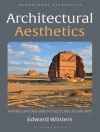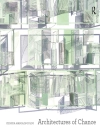This book highlights the relationship between sacred architecture and tourism, specifically focusing on the role of interior design strategies. It explores how the interior design of sacred spaces can influence the tourist experience and shape their perception of these places. The book touches upon elements such as spatial organization, symbolism, material selection, lighting, and acoustics, all of which contribute to creating a meaningful and immersive environment for visitors.
It explores the architectural design, ideological motivations, and the historical context surrounding the palace’s construction. The book also addresses the eventual abandonment of the project and its transformation of their uses, reflecting on the complexities of realizing utopian visions in architecture. It examines how the sanctuary’s architectural design and spatial arrangement interact with the surrounding landscape, including elements such as topography, vegetation, and water features.
Moreover, it focuses on the interior design and explores the symbolism, spatial organization, artistic elements, and spiritual experiences associated with the dome interiors of these structures. The book showcases the historical context, cultural influences, and the evolution of design principles that shaped these remarkable spaces.
Also, this book investigates the transition of visionary architectural drawings from the realm of professional architects. Furthermore, it explores how architectural drawings serve as a medium for expressing imaginative and utopian ideas, and how this transition occurs in the context of architectural education.
表中的内容
Preface.- Introduction.- PART 1.- The Sublime in Architecture: Phenomenology of Religious Structures.- Traditional Form and Symbolic Abstraction in Synagogue Architecture.- The utopia of beauty: the conservation of the land art park of Fiumara d’arte in Sicily.- The Surge of Brutalist Architecture in Southwestern Oklahoma During the Cold War Era.- Adaptive reuse of Sacred Architecture in New York City.- The Utopian Home is Not the Ideal House: Towards A Psychologically Conscious Architecture.- From Utopia to Historia: The Journy of Islamic Art From the spoken word to the written calligraphy.- Sacred Sikh Architecture as Places of Spiritual Connect – A case of Golden Temple, Amritsar.- Between heaven and earth: Dome interior from The Hagia Sophia to The Süleymaniye Mosque.- The significance of the relationship of the sanctuary of Sidi Bou Mediane in El-Eubbad in Tlemcen with its surroundings natural landscape.- University Chapel Project for an interfaith space in Perugia at the Rectorate Gardens.- “Concerning the Spiritual in Architecture.” Four churches by Carlo De Carli.- Sacred architecture and touristic consumption: the role of the interior design strategy.- The construction of the Palace of the Soviets as a creation of a utopian symbol.- The Transition of Visionary Architectural Drawings: From the Paper Architecture of Architects to the Graduation Designs of Japanese Architecture Students.












